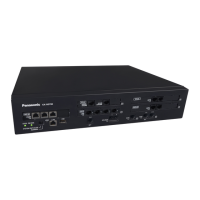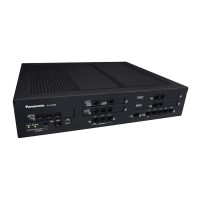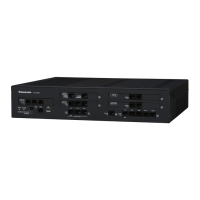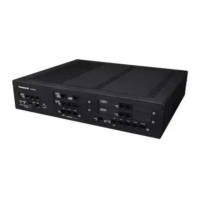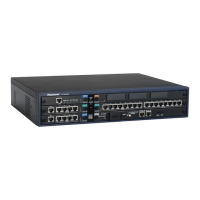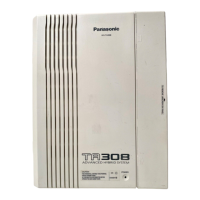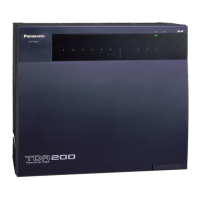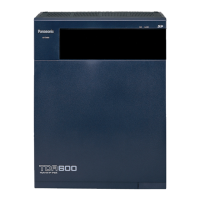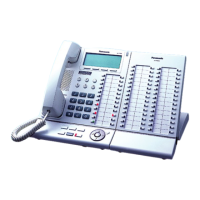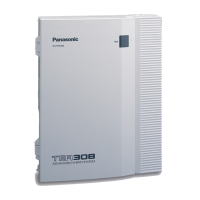4.3.2.2 Common Extension Numbering for Multiple PBXs
Description
Multiple PBXs in separate locations, connected in an IP network, can share a common block of extensions
designated in a gateway group.
Explanation:
In the same way as when connected by a TIE Line, if a dialled number is not found at the local PBX, the call
can be sent to other PBXs connected via an IP network. When an extension number is dialled, the PBX first
searches local extensions for a matching number. If there is no match, the PBX then checks the TIE Line
Routing Table for the Gateway Group for a corresponding entry. If an entry is found, the call is sent to the
connected PBX.
Conditions
• KX-NSN002 (Activation Key for QSIG Network) is required to use this feature. In a One-look network, the
activation key is required only for the Master unit.
• System programming is required to enable this feature.
• If the called extension does not exist at the called PBX, the next PBX in the same gateway group is called
automatically.
• The Routing to Operator setting in system programming must be disabled to use this feature.
• To use this feature, all PBXs in the IP network must be KX-NS1000 PBXs, or KX-NCP/KX-TDE series
PBXs with MPR Software Version 3.0000 or later.
PC Programming Manual References
18.5 PBX Configuration—[10-5] CO & Incoming Call—Miscellaneous— Intercept—Routing to Operator -
No Destination (Destination is not programmed.)
Feature Guide 387
4.3.2 Voice over Internet Protocol (VoIP) Network
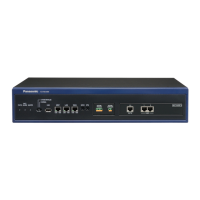
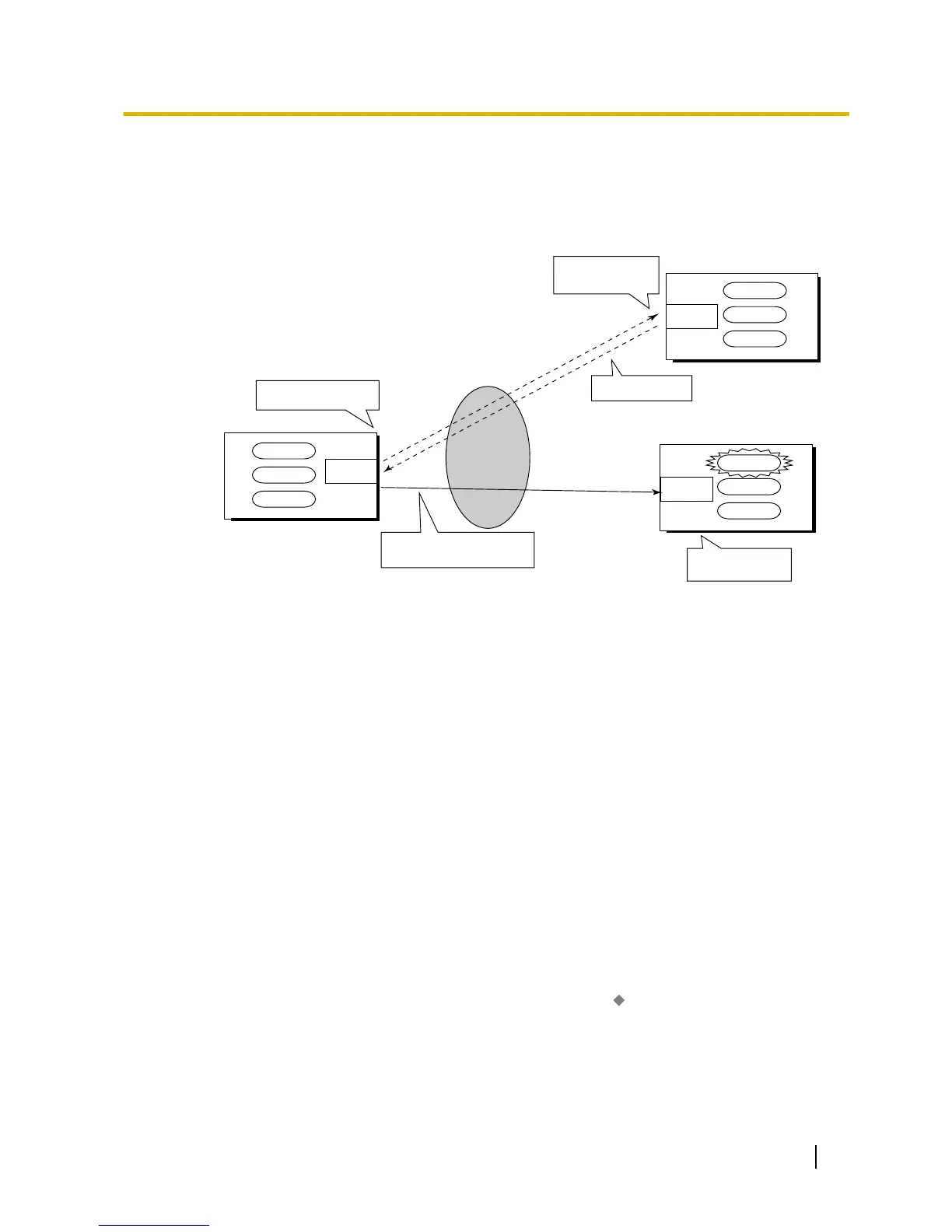